Black Friday 2025 has landed at Analogue Wonderland, bringing some of our biggest film photography deals of the year - from discounted film and cameras to money-saving WonderLab processing offers, exclusive bundles, and festive specials available for a limited time only. Grab a great deal while stocks last!
Recent posts
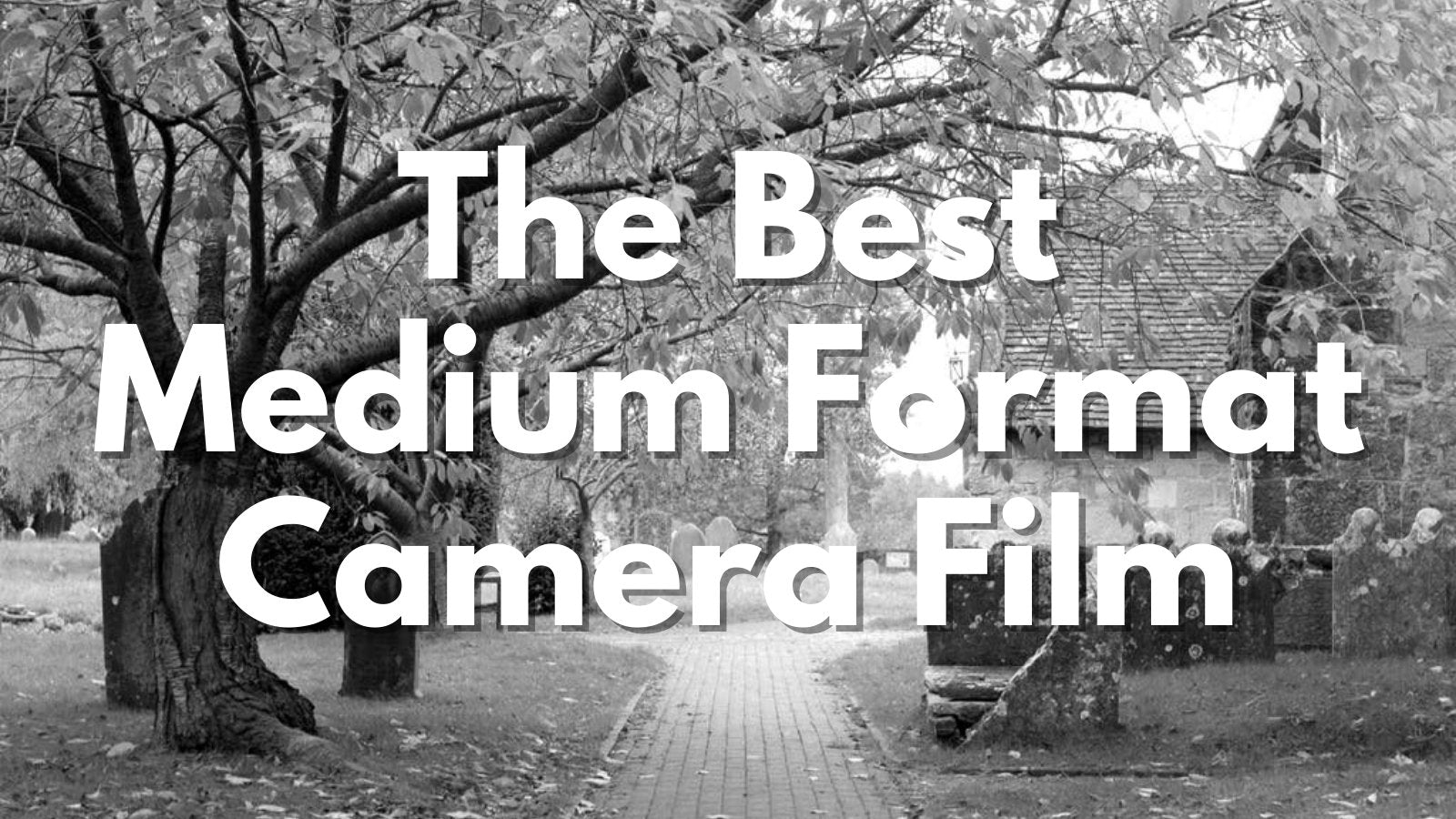
The Best Medium Format Camera Film
By Paul McKay
The best medium format camera film delivers stunning sharpness and detail, beautiful tonality, and a dynamic range to make film shooters weep. Here we list the best medium format camera films currently available - as voted for by the Analogue Wonderland community.
Why Medium Format Camera Film is Awesome
A roll of 120 camera film is very similar to what’s sitting inside a can of 35mm film from the same brand. Indeed, it’s also the same emulsion sitting inside a box of 8x10 sheet film.
While there may be minor changes to the plastic backing or tiny chemical tweaks to improve stability for different formats, the biggest tangible change is the size of the film. Strictly speaking, then, the resolution and dynamic range of even the best medium format camera film is identical to that of a roll of the same film stock in 35mm format.
In practice, though, the resolution and dynamic range of a roll of medium format camera film will be far superior to that of its 35mm equivalent. And these two elements - resolution and dynamic range - are directly related.
120 film on the left compared to 620 film, 127 film, 35mm film and 110 film
The resolution part is simple to understand; the larger negative size of medium format film means that less enlargement is required than with a 35mm negative in order to produce an image of the same size. And less enlargement means the grain is less noticeable. This equals greater detail. While technically this has no effect on dynamic range, in practice the improved detail of medium format camera film leads to smoother transitions and gradients, allowing you pull a lot more detail out of shadow areas before things start to look ropey. This gives an impression of vastly improved dynamic range over 35mm.
In short, not only do you get a sharper image with 120 film, but also a more flexible one.
(Further reading suggestion: our Beginner's Guide to Film nicely summarises the differences in film formats!)
Which Medium Format Film is Best?
Hopefully the above explanation has fully convinced you that medium format photography is the way forward. But which medium format camera film should you choose? In short, what’s going to be the best medium format camera film for you?
If you’ve been enjoying playing around with some of the more outlandish film stocks that are available in 35mm format, and are now venturing into MF territory for the first time, don’t expect to see too many of your favourite experimental film photography brands making the leap to medium format with you. MF photography is largely the domain of tried-and-tested workhorse films.
Still, while medium format photographers don’t have the same degree of choice as 35mm film shooters, this is more than made up for by the level of quality on offer. In fact, it’s worth remembering that the best medium format camera film will produce results that are far superior to anything 35mm can muster. Scratch that; even the worst 120 film will often outdo an average 35mm camera film on sharpness, detail, and exposure latitude - simply due to the larger-sized negative. So if it’s these qualities that you value in film photography, you will certainly not be disappointed by any of the products under review here.
Having said that, while the options are undeniably narrower in the 120 arena, not all medium format camera films are created equal. To be sure, there aren’t really any duds in this department, but there is nonetheless some notable variation in the final results. Not least of all because of the differing ISOs on offer, but also simply down to colour, tonal rendering, and grain shape.
(c) Tom V shot on Ektachrome E100 120
Choosing the Best Medium Format Camera Film for Your Photography
When we say that what follows is a list of the best medium format camera films currently available, you can take that quite literally: these really are the creme-de-la-creme. Just bear in mind, though, that which of them proves to be the best medium format camera film for you will depend upon your precise photographic needs and preferred style of shooting.
For example, the results produced by a gritty high ISO black and white negative film and that of a super-smooth colour transparency film are worlds apart. This makes an apples-to-apples comparison impossible.
The best approach, then, is to use our guide to the best medium format camera film as a shortlist for making your own choice. But rest assured that any film included in this guide is a top-notch 120 film that has stood the test of time. I.e. it really is among the very best medium format camera films available.
(c) Tim Vickerstaff, shot on Ilford Delta 100 120 film
In fact, as 120 format was once largely the domain of professional photographers, all of these film stocks have been made with pros in mind; guaranteeing solid results and technical excellence every time. However, this fact doesn’t stop 120 film from being enjoyed by countless amateur enthusiasts and even beginner photographers around the world; as testified by the number of glowing reviews these films have received from the photographers of all levels who make up the Analogue Wonderland community.
While clearly we have our own personal favourites here at Analogue Wonderland, our guide to the best medium format camera film is in large part based upon feedback from this very community. Thus providing you, dear reader, with first-hand knowledge originating from other film lovers like yourselves.
So what are the best options?
The Best Medium Format Black and White Film
With its fine grain, gentle contrast, and moderately slow ISO, Ilford’s FP4 Plus produces some of the smoothest and most technically outstanding black and white images achievable in 120 format. In fact, for anyone working in relatively bright lighting conditions, and for whom freezing action with a fast shutter speed is not a priority, FP4 is perhaps the best medium format camera film out there today.
As community member Stephane notes, FP4 is “perfect for a nice sunny day.” And Stephane goes on to say that he is “really pleased with the prints as well as with the scans. The tonal range is quite wide and retained details in the highlights and in the blacks. Will certainly use it again for some landscape work.” Good to know!
FP4 isn’t just for landscapes though. In fact several customer reviews note how versatile this film is, with many recommending it for portraits and street photography. One such reviewer is Andy Walker, who raves about how clean and low contrast FP4 negatives are, adding that “with the low grain of 120 film this creates a very nice smooth looking image.”
Likewise, Lucinda Lewis also rates FP4 in medium format, commenting that “you cant go wrong with Ilford. This (FP4) and HP5 are staple black and white films for any level of photographer. You wont be disappointed.” We couldn’t agree more, Lucinda!
Ilford FP4 Plus sample image (c) Danny Rowton
Those who eventually find their way to medium format photography tend to do so for a number of different reasons. Some seek ever smoother, grain-free perfection; whereas others have no intention of losing the grain at all, but just want the bigger negative provided by 120. For this latter category of photographer, a 400 ISO film offers a much better all-round option than slower film such as Ilford’s FP4 (above). This is particularly true for those working in the often challenging lighting conditions of the British Isles.
Kodak Tri-X is just such a film; offering crunchy blacks and a good dose of grain that is nonetheless much better controlled than with its 35mm sibling. As community member Kris observes, Kodak Tri-X 400 is “pretty much a perfect black and white film. Much better in 120 than 35 due to grain. It is marvellously gritty and detailed and crisp.”
User Steven Tofield is equally smitten with Tri-X; “I used it for the first time in a studio environment and I loved how it captures amazing contrast. This film is a film is a great all-rounder and ideal for beginners. Love it.”
Meanwhile, those seeking either greater speed or an extra dose of grit might consider pushing their Tri-X, as Wendy Chapman has done above to excellent effect: “I pushed a roll of TriX from 400 to 1600 to photograph a local silversmith in lower light conditions in their shop. I used my Pentax 645n and 120 film. I sent the film to a lab and they processed to accommodate the film being pushed. It came out very well. Nice contrast with details in both the shadows and highlights. The grain was smooth and the tones looked great.” They certainly do!
Kodak Tri-X sample image (c) Wendy Chapman
Looking for an all-round never-miss-the-shot 120 film for black and white photography? Well, it’s worth noting that a large number of Analogue Wonderland community members consider Ilford HP5 to be the best medium format camera film there is.
Take James Nicholson for example: “Honestly, HP5 is probably the easiest most rewarding b&w film to use if you are a lover of the classic slightly grainy b&w look. I started using film again at the start of lockdown, and quickly found HP5 to just work perfectly, and have the look I could see in my head. When I then ventured into medium format, the first roll of film was a no brainer. With the higher resuloution, you loose some of the grain compared to 35mm, but it really does still have a classic look.”
In fact James is so convinced that HP5 is the film for him that he never goes anywhere without a roll of it in his bag!
Similarly, Raymond Keller also speaks very highly of HP5, recommending it for pretty much any genre of photography you can think of. Like many, Raymond values HP5 for its dependable results: “I’ve been using Ilford HP5 film for many decades and the quality and reliability is never in doubt.” Rayond also adds that “[i]n the darkroom it is a joy to work with and the grain in the film makes focusing simple. I have used this film in 35mm and 120 format and each time you load your camera you feel a confidence In getting the results you are after.”
And for anyone wondering how HP5 compares to Tri-X in the pushing stakes, rest assured that you can get away with a lot using HP5 too. Indeed, some even prefer this film pushed rather than giving it normal exposure. Take community member Kris again: “Best used pushed to 1600. Amazing grain and detail!”
Not only does HP5 hold its own against Tri-X in terms of image quality, but at the time of writing Ilford’s product also comes in at a much more competitive price. This moves Ilford HP5 to the top monochrome spot in our guide to the best medium format camera film. Community member Roberto Biondo no doubt sums things up for a lot of people when he writes that: “[a]s a habitual Ilford HP5 user in 35mm format, I had very high expectations for it in 120 format. And it did not disappoint.”
Ilford HP5 Plus sample image (c) Peter
The Best Medium Format Colour Film
One of the last 120 transparency films still in existence, Fuji Provia 100 is a relatively slow ISO emulsion designed to provide faithful rendering of skin tones and overall realistic colours whatever the subject. While slide film is undoubtedly a niche product within what is already a niche category, those who know, know. You know?
As Analogue Wonderland community member Graeme Simpson puts it “I would choose this film over and over again as it's so rewarding.”
Meanwhile, for Provia shooter Ted Smith this is a “world class film stock.” What’s more Ted goes on to say that Provia “is the film I reach for whenever I want the most amazing detail. To my eye, it is the best slide film remaining…I use it a lot for both landscapes and even nighttime city scapes as it has an amazing ~120 seconds before reciprocity failure applies.”
For community member Raymond, however, it’s the colours that make Provia one of the best medium format camera films out there: “I love shooting this film in 120 and getting back the huge gorgeous slides to look at - the colours are amazing without going overboard. The detail you can get with this film and a good lens is also stunning. If you're looking for a transparency film for medium format give it a try!” Wise words indeed.
Fuji Provia sample image (c) Thomas Wesley
Portra is a relatively modern film that was designed to give the best results when scanned. And on this front Portra 400 never fails to deliver, providing excellent detail and latitude every time. While the colours of Portra 400 differ very slightly from its slower ISO sibling (see below), images shot on this film are always a joy to behold. And with almost two stops of extra sensitivity to light over Portra 160, for many photographers this emulsion will be the safer bet.
Indeed, as Portra 400 users Dan and Dea both attest, it’s a “[g]reat all-rounder” that is suited to virtually any shooting situation and genre of photography. What’s more, Dan adds that “Portra 400 is the go to film for most photographers which is not surprising. It has amazing latitude and can handle any situation you throw at it…no other film makes me feel safer then Portra 400!” Meanwhile Dea praises Portra 400’s colour rendition, saying that it’s “[o]ne of the most neutral close to life films in terms of colour accuracy. Film can be easily pushed with great retention of details in the shadows and great results.”
If that isn’t enough to convince you, community member Richard Smith puts things unequivocally when he says that “[t]he hype is real.” Adding that “[i]n 120, it's hard to beat in my opinion.” James Nicholson, on the other hand, worries that his recent purchase of Portra 400 might be the start of a slippery slope to addiction; so pleased is he with the results. Finally, Lucinda Lewis simply has this to say: “It's the best of the best.”
Kodak Portra 400 sample image (c) Andrew Low
As Portra has been the go-to emulsion for many professionals and enthusiasts alike these last couple of decades, it’s become a familiar look. This is not in itself a bad thing; indeed, using the same tools as your heroes is one of the simplest ways of achieving a similar result. Yet in recent years a growing number of photographers have come to enjoy the slightly different shades offered by Fujifilm’s somewhat less well-known Pro 400 emulsion. Although essentially an equivalent product to Portra 400, for many who try Pro 400 the move ends up being a permanent one.
One such user is community member Beth Jaggard, who calls Fuji Pro 400 “The one!” and explains that she “[u]sed this film as an alternative to Portra as it was out of stock at the time, and ultimately will be making the switch to Pro 400. I love the colours, especially the green and how well this film stood up to me really under exposing it!” Indeed, it’s the understated colours and excellent rendition of skin tones that have won a great many photographers over to the Pro 400 cause.
Pro 400H user Anthony Chatburn recommends this film stock for photographers working within the UK, where the dense greenery of the landscape is often accompanied by less than ideal lighting conditions: “i think pro400H, coming from a british based photographer, is the perfect all round every situation film for shooting in the uk. it kills it in landscapes and lush fertile scenes but its also a great portrait film…in great light it shines but even in dull light it really pops. it has just the right amount of contrast out of box without having the more subdued flatness of portra and is very forgiving in the highlights with a wide exposure latitude.”
Likewise, community member Hugo M is enthusiastic about Pro 400’s tones: “The greatest difference between this and the Portra is the colour palette. The Pro400H has a slightly more delicate palette with muted yet accurate skin tones and vibrant greens and blues.“
All in all, then, Fuji Pro 400 makes an excellent alternative to Portra 400. And while the results are certainly comparable in quality to Kodak’s offering, the subtle difference in colour palette is one that many find very pleasing indeed. So while Fuji Pro 400 might be somewhat “slept-on,” it is without a doubt one of the very best medium format camera films available right now.
Fuji Pro 400 sample image (c) Elliot
The number one spot in our guide to the best medium format camera film goes to a huge community favourite: the modern classic that is Portra 160. Sure, a slightly faster ISO film such as Fuji Pro 400 or Portra 400 (above) might make more sense for many photographers in the UK - especially when it comes to winter photography. But when the conditions are right, there really is no beating Portra 160 in terms of final results - making it the unchallenged champion of the medium format colour film world.
With its muted pastel tones and that unmistakable cyan/yellow glow, it goes without saying that Portra 160 is highly flattering on people. As community member Matt says, it is truly “[f]antastic for portraits.” Adding that he “shot some promotional images for a friends upcoming single release, and wanted to shoot it on film, as it really suited her singer/songwriter aesthetic. Some fantastic colours, and the negative scan barely needed any additional processing.”
Yet while Portra certainly excels at portraiture, don’t be misled by the name; this film can be equally effective for a whole host of other subjects too. Not least of which landscapes, as community member Lyra confirms: “I think it's best for controlled portraits but I love the way my landscapes have come out with it due to the fine grain.” Steve L concurs, noting that “Portra really is as good as they say,” and going on to add that “I'd put off trying Portra for as long as possible as I'd heard so many people talking about how wonderful it was I wanted to really see the difference when I did try it…having now tried and tested all the other big name emulsions, I'm still blown over by how good this stuff is.”
While you’ll achieve great results with Portra 160 right out of the box, several community members swear by rating the film at a slower ISO for added impact. One such user is Alex C: “Shot a few rolls of this film in my Pentax 6x7. Cannot get over how beautiful the tones are. Highly recommend exposing at iso 125 to get more shadow detail and more pastel tones- a very desirable look that can only be produced by Portra.”
This sentiment is echoed by Anthony Chatburn, who says that “my personal preference is always over expose portra against the box speed by 1 or even 2 stops if you prefer a more punchy contrasty look.” Ellen Richardson also values Portra 160 for the degree to which you are “able to over- or under-expose freely without worrying about grain or losing detail. Perfect film for a calm portrait session, or a day out in nature.”
All things considered then, this is a highly versatile emulsion that - lighting conditions allowing - will produce unparalleled results in a wide variety of situations. This makes Kodak Portra 160 the Analogue Wonderland film user community’s choice for the very best medium format camera film available.
Kodak Portra 160 sample image (c) Dea
Final Thoughts
Having read through our guide to the best medium format camera films, you now know exactly which popular emulsions other photographers out there are using.
Although as mentioned earlier, when choosing a 120 film for your own photography, you will not only need to consider the opinions of others, but also the genre of photography you are interested in producing, the conditions you will be working in, and the precise effect you wish to achieve. Whatever your needs though, hopefully you’ve found a film among our shortlist that piques your interest.
Happy Shooting!
Ready to dive in?
Keep Reading
View all
Christmas 2025: Shipping & Opening Hours
Christmas 2025 is fast approaching! To make sure your analogue goodies arrive in time, take note of our last shipping dates, plus opening and operating hours over the festive season. We've got everything you need to gift the magic of film photography this Christmas!

Film Photography Christmas Gift Guide 2025: Analogue Wonderland
Capture the magic of Christmas with film - no filters needed. Our 2025 Film Photography Christmas Gift Guide 2025 is packed with thoughtful presents for every type of shooter, from curious beginners to seasoned photographers. Discover film stocks, cameras, and creative accessories that will make this festive season truly memorable.
Subscribe to our newsletter 💌
Sign up for our newsletter to stay up to date on film photography news, sales and events:
Free Tracked Shipping
On all UK orders over £50
Passion For Film
An unbeatable range and an on-site lab
Our Customers Trust Us
Thousands of independent 5* reviews
All Deliveries are Carbon Neutral
Independently audited and verified by Planet
- Opens in a new window.




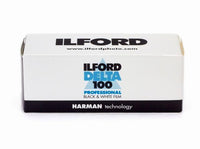
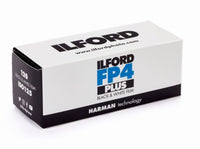
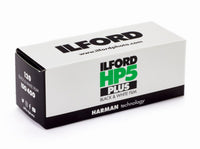
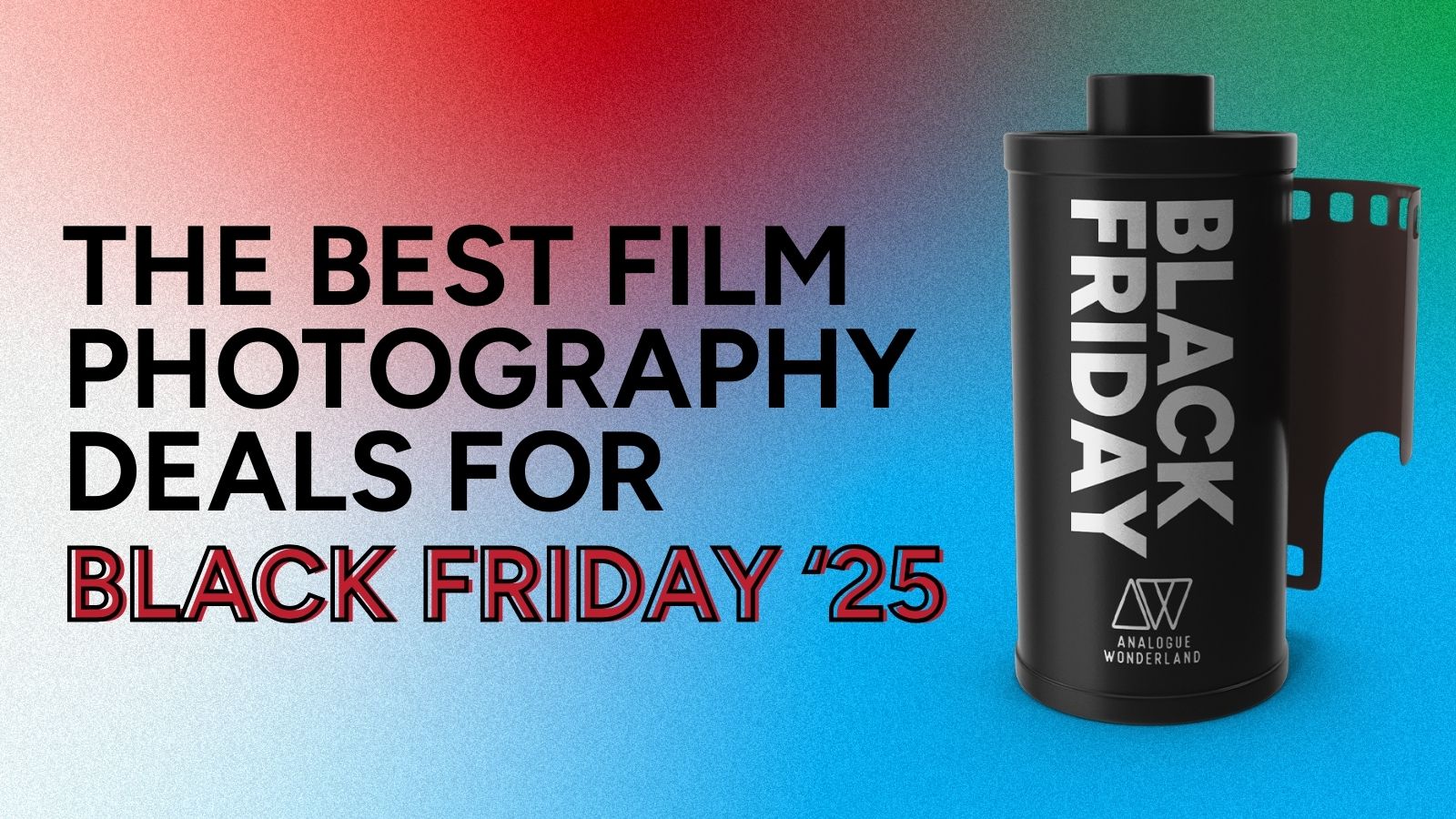
1 Comment -
John •
Would ilford hp 5 be good for takeing photos of a cathral and sunsets what about a red filter